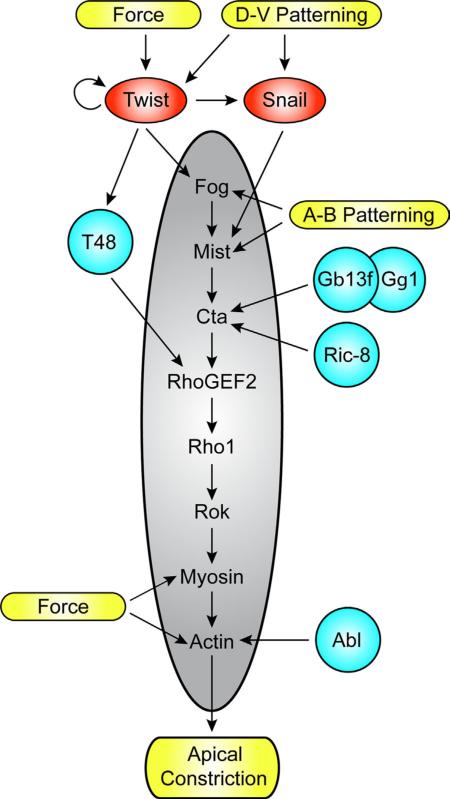Fig. 3.
Known Inputs into the Fog Signaling Pathway. The core Fog signaling pathway components are shown in the central gray oval. Transcription factors are in red ovals. Accessory proteins are in aqua circles. Yellow bars denote physical changes. Physical forces act on Twist, myosin, and actin to change their abundance and localization, though the mechanisms of these functions and whether they are direct are not entirely clear. Dorsal–ventral patterning sets up Twist and Snail expression. Twist induces transcription of fog and T48 in VF cells. Similarly, Snail is necessary for mist transcription in the VF. Apical–basal patterning organizes Fog and Mist subcellular organization. T48, a single pass transmembrane protein, helps to localize RhoGEF2 apically in the VF. Gβ13f, Gγ1, and Ric8 are all required for Cta protein stability and function. Abl helps organize actin apically in contracting cells. All of these inputs, and likely more, help organize and activate Fog signaling in developmental time and space.

